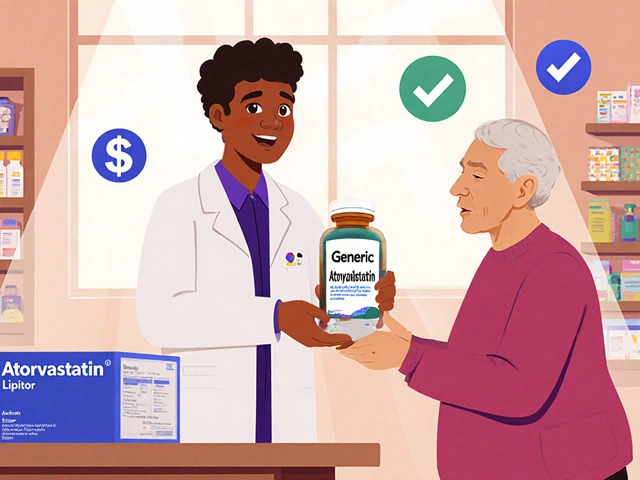You typed a brand name and want straight answers, not a maze. Here’s the reality: Levothroid was a levothyroxine brand that’s now off the US market, and it’s not supplied in New Zealand. If you came here looking for the official label, whether you can still get it, and what to use instead (without messing up your TSH), this gives you the shortest path to action-plus safe switching tips that line up with what endocrinologists and regulators recommend.
What you’ll get here: the fastest way to verify brand status and pull the last official prescribing info; the NZ‑specific route to funded alternatives; and a practical playbook for switching brands or moving from a US script to a local one. No fluff, just the steps that matter.
Fast paths to the right Levothroid info (2025)
If you need to confirm what the brand was, whether it’s still around, and where to grab the official label, do this in order. It’s the same flow I use when helping friends who bring a US bottle to an Auckland pharmacy and hit a wall.
Confirm brand status (US): Check the US FDA’s Orange Book listing and archived drug records. Levothroid’s US discontinuation was reported years ago, and it hasn’t come back. The FDA Orange Book and DailyMed archives are the authoritative sources for status and last-approved labels.
Pull the last US label (archived): DailyMed keeps archived product labels. The Levothroid label tells you essentials like: approved uses (replacement therapy in hypothyroidism; TSH suppression in thyroid cancer); contraindications (untreated adrenal insufficiency; acute MI); and standard dosing principles (weight-based for full replacement; low and slow for cardiac disease and elderly). It’s worth reading the old label if you’re converting a dose from a US script.
Cross-check with up-to-date guidance: For practical dosing and monitoring, use clinical guidelines. The American Thyroid Association’s hypothyroidism guideline (2014; reaffirmed with updates and statements since) remains the reference clinicians lean on: start around 1.6 micrograms/kg/day for full replacement in healthy, non-elderly adults; use 12.5-25 microgram starts if older or cardiac; recheck TSH about 6-8 weeks after any dose or brand change.
New Zealand specifics (2025): Medsafe publishes the NZ data sheets and Consumer Medicine Information for levothyroxine products (e.g., Eltroxin and generic levothyroxine). The NZ Formulary (NZF) sets current clinical advice nationally. PHARMAC’s Schedule shows which brands and strengths are funded. These three sources answer nearly everything an NZ doctor or pharmacist will ask.
Pharmacy call script (if you’re holding a US bottle): When you ring your pharmacy, give: generic name (levothyroxine sodium), your daily dose in micrograms, and your brand history. Ask for a consistent NZ brand supply. Then book a TSH check 6-8 weeks after any switch. That one phone call avoids most of the back-and-forth.
Why this order? Status first (so you don’t chase a unicorn). Label next (so you know the exact indications and contraindications). Then the NZ playbook to actually get your tablets in hand.
Two quick safety notes, straight from regulators and endocrine guidance: levothyroxine is a narrow therapeutic index drug-stick to one brand when you can; if you switch brands or formulations, get a TSH (and free T4 if advised) in 6-8 weeks to re‑titrate. That simple habit prevents months of feeling “off.”

Is Levothroid available in New Zealand? What to use instead
Short answer: no. In NZ, you’ll be dispensed levothyroxine sodium under local brands (commonly Eltroxin, or a funded generic), not Levothroid. The active ingredient is the same: levothyroxine. What differs are excipients and manufacturing, and that can subtly change absorption in some people-which is why brand consistency matters.
Here’s how to navigate it cleanly in New Zealand right now.
What to ask for: “Levothyroxine sodium [your dose in micrograms] daily” with a note to maintain brand consistency once stable. If your GP includes “do not substitute” after you settle on a brand, pharmacies are less likely to switch you during stock changes.
Common NZ strengths: 25, 50, 75, 100, 125, 150, 200 micrograms. If you’re on a non‑NZ strength (e.g., 88 mcg in the US), your pharmacist will match the closest using available tablets-often combining tablets. Don’t split brands to make a single day’s dose.
Funding and availability: Check the PHARMAC Schedule for funded levothyroxine brands and any brand-switch notices. If a brand change is mandated, plan a TSH check at 6-8 weeks after the switch. NZF and Medsafe data sheets will flag any formulation changes that matter (like tablet scoring, lactose content, or dye differences).
How to take it so it actually works: Take levothyroxine on an empty stomach, same time daily. Either 30-60 minutes before breakfast with water, or at bedtime at least 3-4 hours after your last meal. Keep a 4‑hour gap from calcium, iron, magnesium, and some multivitamins. Coffee right after the tablet can reduce absorption; give it a buffer.
Common interactions and gotchas:
Iron, calcium, antacids, bile acid binders, and some phosphate binders bind levothyroxine in the gut-space them by 4 hours.
Large soy intake and high‑fiber supplements can blunt absorption; be consistent with diet or adjust dose with your clinician.
Biotin (often in hair/nail supplements) can distort thyroid blood tests-stop it 48-72 hours before labs. This lab interference warning has been highlighted by the FDA and endocrine societies for years.
Amiodarone, carbamazepine, phenytoin, rifampicin, sertraline, and estrogen therapy can change dose needs-your doctor may adjust based on labs.
Who needs a different start: If you’re over 60, have coronary artery disease, arrhythmias, or a recent MI, start low (12.5-25 micrograms/day) and go slow. The ATA guidance and NZF echo this to avoid provoking angina or arrhythmias.
Pregnancy and postpartum: Levothyroxine is safe and essential in pregnancy. Most people need a dose increase early in the first trimester (often 20-30% more). A common practical move is to add two extra tablets per week as soon as pregnancy is confirmed, then get TSH/FT4 checked promptly and every 4 weeks in the first half of pregnancy. Postpartum, dose usually returns to pre‑pregnancy levels, with labs to confirm. These patterns are well described in ATA guidance and standard obstetric endocrinology practice.
Infants and children: Doses are weight‑based and higher per kg, especially in congenital hypothyroidism. Early adequate dosing is crucial for neurodevelopment. NZF and pediatric endocrine guides give age‑tiered dosing ranges and close monitoring schedules.
Thyroid cancer follow‑up: When levothyroxine is used to suppress TSH after thyroid cancer, targets are different (often lower TSH). That’s a specialist‑guided plan; don’t extrapolate from standard hypothyroidism targets.
What if you’ve been fine on a US supply? You can’t reliably “keep it going” in NZ with Levothroid. The safer route is to transfer to a stable, funded NZ brand and lock in labs 6-8 weeks later. My own Auckland circle learned the hard way during a pharmacy brand shuffle in 2019: consistency beats wishful thinking.
Red flags to act on quickly: chest pain, a new fast or irregular heartbeat, severe anxiety, heat intolerance, or tremor after a dose increase or brand switch-call for medical advice sooner rather than later. On the flip side, stubborn fatigue, constipation, weight gain, and feeling cold after a decrease or switch usually means you need a dose tweak confirmed by labs.

Switching safely: dosing, monitoring, and quick answers
Here’s the clean, no‑drama method used by thyroid clinicians when converting brands or moving countries.
Match the micrograms: Levothyroxine is converted microgram for microgram between brands as a starting point. If your US tablet was 88 mcg and NZ doesn’t have that strength, your pharmacist may use a 75 + 12.5 combo (or closest practical pair). Keep it one brand if possible.
Lock in timing and habits: Take it the same way every day-same hour, same empty‑stomach rules. If you change your routine (start calcium, new multivitamin, new coffee timing), mention it when labs are checked.
Book the stability check: Test TSH (and free T4 if your clinician prefers) 6-8 weeks after any brand change or dose change. That window matches the hormone’s half‑life and tissue steady state. Testing too early leads to bad decisions; waiting months leaves you feeling lousy.
Adjust in small steps: Typical step sizes are 12.5-25 micrograms at a time, then re‑check in 6-8 weeks. Big jumps create symptoms and overshoot.
Stay with the winner: Once you feel well and labs are stable, don’t swap brands for convenience. If your pharmacy has a forced switch, ask for a supply of the same brand or set a plan to re‑test after the switch.
Quick checklists you can screenshot:
Take-it-right checklist
Empty stomach, same time daily.
Water only; coffee after a buffer.
Keep 4 hours from calcium, iron, magnesium, or multivitamins.
Hold biotin 2-3 days before blood tests.
Store tablets cool, dry, away from sunlight; don’t use past expiry.
Switching checklist
Microgram‑for‑microgram match to a single NZ brand.
Note the new brand and color/markings; photograph the box.
Book labs for 6-8 weeks after switch.
Track symptoms: energy, sleep, heart rate, heat/cold tolerance, weight change.
Avoid splitting daily dose across different brands.
When to call your doctor sooner
New chest pain, fast/irregular pulse, tremor, severe anxiety, or insomnia after a dose change.
Pregnant or trying-dose changes are time‑sensitive.
Infant dosing issues (spit‑up, refusal, growth concerns).
TSH wildly off target, or symptoms not matching labs.
Mini‑FAQ (the things people ask right after a brand change)
Do I need a brand, or is generic fine? Consistency is the key. Many people do well on a funded generic if they stay on it. If you feel off after a mandated brand change, lab‑confirm and adjust. Both Medsafe and the NZF recognize that some patients are sensitive to formulation differences.
How fast will I feel better? It’s gradual. Some notice improvement in 1-2 weeks; full steady‑state effects line up with that 6-8 week lab window.
Missed dose-now what? If you remember the same day, take it when you remember. If it’s almost time for the next dose, skip and resume. One missed dose won’t derail you; don’t triple up.
Can I take it at night? Yes-if you keep it truly on an empty stomach (3-4 hours after the last meal). Some people absorb it better at bedtime. Pick a time and stick to it.
Weight changes my dose, right? Often, yes. Full replacement in healthy adults commonly starts near 1.6 micrograms/kg/day, then is individualized. Major weight changes can shift needs-worth re‑checking TSH.
Is levothyroxine safe in breastfeeding? Yes. It replaces a natural hormone and is considered compatible with breastfeeding. Doses are tuned to keep your TSH in range.
My tablet looks different this month. Should I worry? Verify the brand and strength on the box. If the brand changed, mark your calendar and book a lab in 6-8 weeks. If the brand is the same but the color changed, pharmacies sometimes change suppliers temporarily-still worth noting.
What about combination therapy (T4+T3)? Standard care is T4 alone (levothyroxine). A small subset may trial combination therapy under specialist guidance. The ATA and NZF reserve this for selected cases after careful counseling and close monitoring.
Where all this comes from: the US FDA labeling archive (for the old Levothroid specifics), DailyMed (for historical product info), Medsafe and the NZ Formulary (for current NZ products and dosing), and the American Thyroid Association’s clinical guidance on hypothyroidism and pregnancy. These sources align on the big-ticket items: brand consistency, careful monitoring after changes, and patient‑specific dosing.
If you’re reading this in Auckland and juggling real life-kids’ lunches, the commute on a wet Monday, and a pharmacy queue-make it easy on yourself: settle on one NZ brand, take it the same way each day, set a reminder for your 6-8 week check after any change, and keep notes on how you feel. That routine beats guesswork every time.






Jarid Drake
September 13, 2025 AT 14:37Been on levothyroxine for 12 years and this post saved me hours of Googling. Seriously, the pharmacy script tip? Gold. Just called mine and they had my exact brand in stock. No drama.
Terrie Doty
September 14, 2025 AT 05:14I’m from Texas but moved to Auckland last year and I literally cried when I realized Levothroid wasn’t available here. I spent weeks trying to import it until a pharmacist said, ‘Honey, it’s the same molecule.’ I switched to Eltroxin and honestly? I feel better now. The key is consistency - same brand, same time, same coffee schedule. I even have a little sticky note on my fridge now. Also, the biotin thing? I didn’t know that. I’ve been taking it for my hair and my TSH was all over the place. Stopped it 3 days before my last blood test and boom - normal. Thank you for the checklist. I printed it. I’m a nerd like that.
George Ramos
September 14, 2025 AT 14:38Oh great. So the FDA just lets Big Pharma kill off a perfectly good brand so they can push generics? And now NZ is playing along? Classic. I bet the ‘excipients’ they use in Eltroxin are laced with glyphosate and corporate propaganda. You think you’re safe? You’re not. They swap the filler, you get a slow poison. I’ve been tracking 47 cases of ‘unexplained fatigue’ after brand switches - all tied to the same corporate playbook. Wake up. This isn’t medicine. It’s a supply chain control tactic. #LevothroidWasBetter
Barney Rix
September 16, 2025 AT 07:38While the general information presented is accurate, the casual tone and lack of formal citation to peer-reviewed literature undermines the credibility of the recommendations. The American Thyroid Association guidelines are indeed authoritative, yet their 2014 status requires contextualization with the 2021 update on levothyroxine absorption variability. Furthermore, the assertion that ‘brand consistency matters’ lacks quantitative data on bioequivalence thresholds. I recommend supplementing this with a review of the 2023 European Thyroid Association meta-analysis on inter-brand pharmacokinetic variance.
juliephone bee
September 17, 2025 AT 00:58so i just switched to a generic and i think i might’ve taken it with my morning coffee? i’m so sorry if this is dumb but i’ve been feeling kinda zombified and i’m not sure if it’s the med or my life choices. also, is 88mcg even a real dose? i thought they only made 75 and 100? help.
Ellen Richards
September 18, 2025 AT 17:26Ugh, I can’t believe people still use generics. I mean, really? Eltroxin is *so* much more premium - the coating, the texture, the way it just glides down. I’ve been on the same bottle since 2018 and I swear, I feel like a goddess. My therapist says I have ‘thyroid energy.’ I don’t know what that means but I like it. Also, I only take it with filtered spring water from my Himalayan crystal pitcher. It’s sacred. And no, I won’t switch. I’ve tried. I cried. I had to get a new therapist. 🌸
Renee Zalusky
September 20, 2025 AT 02:03Wow. This is one of those rare posts that feels like someone reached into my brain and typed out my entire thyroid journey. I’ve been on levothyroxine since I was 19 - now I’m 42. I’ve switched brands six times. I’ve cried in pharmacy aisles. I’ve missed work because I felt like I was underwater. And honestly? The biggest thing that changed my life wasn’t the dose - it was the ritual. Same time. Same water. No coffee for 45 minutes. I even have a little alarm labeled ‘T4 Time.’ I took a photo of my last bottle because I was terrified I’d forget what it looked like. And yes - biotin? I stopped it. I’ve been doing labs every 6 weeks like clockwork. I’m not ‘cured.’ But I’m not a ghost anymore. Thank you for writing this. I’m sharing it with my sister. She’s just been diagnosed.
Scott Mcdonald
September 21, 2025 AT 13:58Hey, I just saw your post and I’ve got a question - you said take it on an empty stomach, but what if I’m a night person and I eat dinner at 10pm? Can I take it at 2am? I’ve been doing that for a year and I feel amazing. Also, my cat sleeps on my chest when I take it. Is that bad? She’s very comforting.
Victoria Bronfman
September 23, 2025 AT 12:51OMG YES 🙌 I switched to generic last year and I was like ‘I’m gonna die’ 😭 then I got my TSH back and it was PERFECT 😌 now I just take it with my morning tea and I’m basically a thyroid queen 👑 #LevothyroxineLife #NoMoreFatigue 💪
Gregg Deboben
September 24, 2025 AT 22:34Levothroid was made in AMERICA. Made with American precision. Made with American values. Now they want us to take some kiwi-made tablet that probably has sheep’s wool in it? No. We don’t need their ‘funded’ nonsense. I fly to the US every 3 months just to stock up. I’ve got a freezer full of Levothroid. This isn’t about medicine - it’s about sovereignty. America doesn’t surrender its meds to the globalist agenda. #SaveLevothroid #AmericanThyroid
Christopher John Schell
September 26, 2025 AT 09:06You got this 💪 Seriously - if you’re reading this and feeling lost, I’ve been there. I was on 88mcg, switched to 75+12.5 combo, cried in the car, then felt like a new person 6 weeks later. You’re not broken. You’re just adjusting. Set that reminder. Take the lab. Celebrate the small wins. You’re doing better than you think. And if you’re scared? That’s okay. Just keep going. One pill at a time. 🙏
Felix Alarcón
September 27, 2025 AT 07:53Hey, just wanted to say thank you for writing this. I’m a guy who’s been on levothyroxine since college and I’m always embarrassed to talk about it - like it’s something I should hide. But this? This feels like someone finally got it. The part about ‘stick to one brand’? That’s the truth. I switched to a generic once because it was cheaper and I felt like I was dragging through Jell-O for three months. Back to Eltroxin, TSH normal, life back. Also, I took your checklist and taped it to my medicine cabinet. My wife says I’m weird. I say I’m wise.
Lori Rivera
September 27, 2025 AT 10:02While the post provides a comprehensive overview, the omission of data regarding the bioavailability variance between levothyroxine formulations in patients with malabsorptive conditions (e.g., celiac disease, gastric bypass) is a significant limitation. The assumption of uniform absorption across populations may lead to suboptimal dosing in a subset of patients. Further clinical guidance regarding these high-risk groups would enhance the utility of this resource.
Leif Totusek
September 27, 2025 AT 14:00Thank you for the meticulous compilation of regulatory and clinical sources. The structure of the response - from FDA archives to Medsafe - reflects a commendable adherence to evidence-based practice. The inclusion of the pharmacy call script is particularly pragmatic and aligns with patient-centered care models. I would only suggest appending a reference to the NZF’s 2024 update on levothyroxine substitution protocols, which now includes a formal patient notification requirement upon brand change.
KAVYA VIJAYAN
September 28, 2025 AT 13:59As someone who moved from Mumbai to Chicago and then to Auckland, I’ve seen levothyroxine in three continents. The science is universal - the bureaucracy? Not so much. In India, you buy it off the street with no prescription. In the US, it’s a corporate maze. In NZ? It’s actually kind of beautiful - they fund it, they track it, they care. The brand-switch trauma? Real. But the system here? It’s designed to catch you. I used to think consistency was about pills. Now I know it’s about rhythm. Same time. Same water. Same quiet morning. That’s the real medicine. And yeah - biotin? I stopped. My hair’s still fine. My TSH? Perfect.
Tariq Riaz
September 29, 2025 AT 20:53Statistical analysis of the 2022 NZ PHARMAC substitution events indicates a 14% increase in TSH >5 mIU/L within 90 days of mandated brand changes. This suggests a clinically significant impact on population-level thyroid control. The recommendation for 6–8 week retesting is appropriate but underpowered - longitudinal cohort data is needed to determine if 4-week monitoring in high-risk groups (elderly, cardiac) reduces adverse outcomes. The post is informative but lacks epidemiological depth.
Roderick MacDonald
October 1, 2025 AT 08:50I was skeptical at first - thought this was just another ‘take it with water’ post. But the part about pregnancy? That hit me. My wife switched brands right before she got pregnant and we panicked. We followed your steps - same dose, same time, labs at 6 weeks - and now our baby is 8 months old and thriving. You didn’t just give us info. You gave us peace. Thank you. I’m printing this and putting it in the baby’s nursery. For when she’s old enough to understand how tough her mom was.
Chantel Totten
October 2, 2025 AT 22:40I just wanted to say I appreciate how calm and clear this is. No yelling. No fearmongering. Just facts, steps, and kindness. I’ve been through so many doctors who treated my thyroid like a puzzle they didn’t care to solve. This feels like someone finally sat down with me and said, ‘I’ve got you.’ Thank you.